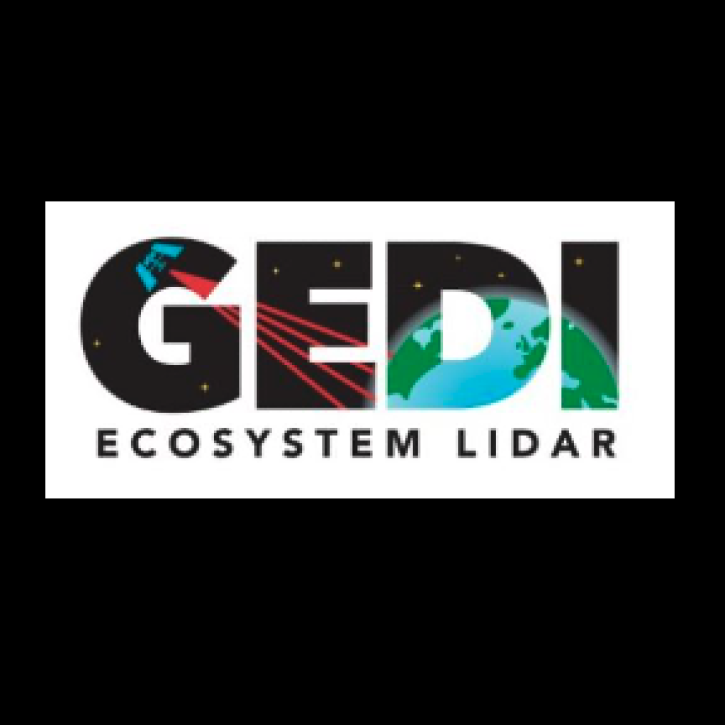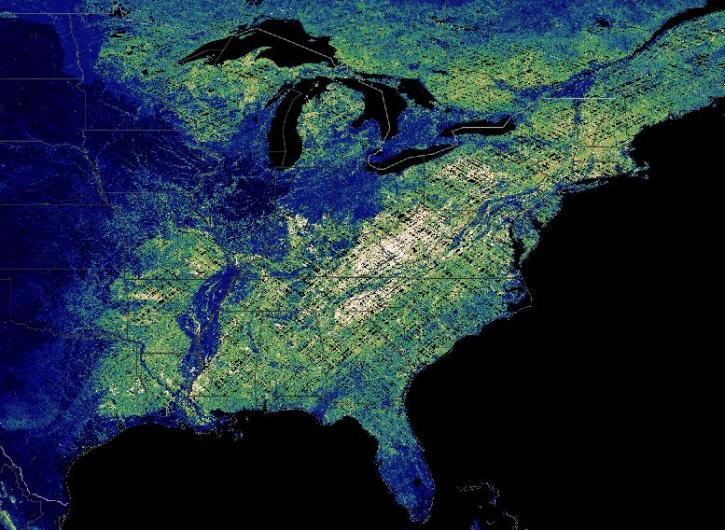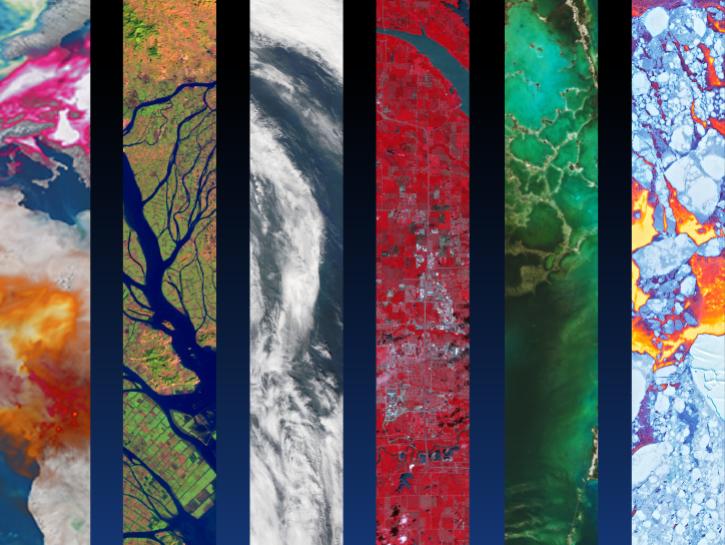Due to the lapse in federal government funding, NASA is not updating this website. We sincerely regret this inconvenience.
Terrestrial Ecosystems Data Access and Tools
NASA has terrestrial ecosystem datasets that help researchers characterize natural areas around the world. Access a range of data and data tools such as AppEEARS, Worldview, and Giovanni to make the most of terrestrial ecosystem data.
Table of contents
Featured Terrestrial Ecosystem Observation Method: GEDI Lidar
The Global Ecosystem Dynamics Investigation (GEDI) instrument is a full-waveform lidar aboard the International Space Station that maps the 3D structure of Earth’s surface. GEDI's three lasers precisely measure forest canopy height, canopy vertical structure, and surface elevation. The instrument's 3D data provide scientists with measurements to calculate the amount of biomass and carbon in forests and how much they lose when disturbed or destroyed.
Data from NASA’s Global Ecosystem Dynamics Investigation (GEDI) mission are adding to our understanding of carbon cycling and the structure and development of global biomes.
7 MIN READ
Join us for an introduction to GEDI Level 3 and Level 4 data products and to learn how to discover, access, visualize, and analyze the data.
Join us for an introduction to NASA’s Global Ecosystems Dynamics Investigation (GEDI) datasets and to learn how to use LP DAAC's web service, data prep script, and Jupyter Notebook Python tutorial series.
The latest dataset from the GEDI mission provides gridded estimates of aboveground biomass density at greater accuracy and resolution than previously available.
8 MIN READ
Terrestrial Ecosystems Datasets
| Dataset | Platforms | Instruments | Temporal Extent | Location Keywords | Spatial Extent | Data Format |
|---|---|---|---|---|---|---|
| ABoVE: Landsat-derived Annual Dominant Land Cover in Boreal North America, 1986-2020 | COMPUTERS, LANDSAT-5, LANDSAT-7, LANDSAT-8 | Computer, TM, ETM+, OLI | 1986-01-01 to 2020-12-31 | ALASKA, CANADA | N: 71.0677 S: 41.2276 E: -50.1766 W: -166.685 | COG |
| ABoVE: Modeled Top Cover by Plant Functional Type over Alaska and Yukon, 1985-2020 | COMPUTERS | Computer | 1985-01-01 to 2020-12-31 | ALASKA, YUKON TERRITORY | N: 75.91 S: 51 E: -122.5 W: -176.1 | multiple |
| ABoVE: MODIS-Derived Daily Mean Blue Sky Albedo for Northern North America, 2000-2017 | SATELLITES | MODIS | 2000-02-24 to 2017-04-22 | ALASKA, CANADA, ARCTIC | N: 79.0819 S: 41.6809 E: -52.6184 W: -173.089 | multiple |
| ABoVE: Needle-Level Chlorophyll Fluorescence, Alaska and Idaho, USA, 2017 and 2019 | FIELD SURVEYS, MODELS | FLUOROMETERS, PYRANOMETERS, Computer | 2017-07-07 to 2019-07-06 | IDAHO, ALASKA | N: 67.9947 S: 44.9061 E: -116.067 W: -149.754 | CSV |
| ABoVE: Post-Fire and Unburned Field Site Data, Anaktuvuk River Fire Area, 2008-2017 | FIELD SURVEYS | SOIL DEPTH PROBE, VISUAL OBSERVATIONS | 2008-07-03 to 2017-07-23 | ALASKA | N: 69.359 S: 69.0189 E: -150.034 W: -151.176 | CSV |
| ABoVE: Spatial Estimates of Carbon Combustion from Wildfires across SK, Canada, 2015 | MODELS | Computer | 2015-04-06 to 2015-08-11 | SASKATCHEWAN | N: 61.2389 S: 51.1943 E: -100.168 W: -116.055 | GeoTIFF |
| ABoVE: Study Domain and Standard Reference Grids | FIELD SURVEYS | Computer | 2014-01-01 to 2021-12-31 | ALASKA, CANADA | N: 90 S: -90 E: 180 W: -180 | |
| ABoVE: Study Domain and Standard Reference Grids, Version 2 | FIELD SURVEYS | Computer | 2014-01-01 to 2023-04-20 | ALASKA, CANADA | N: 90 S: -90 E: 180 W: -180 | multiple |
| ABoVE: Synthesis of Burned and Unburned Forest Site Data, AK and Canada, 1983-2016 | MODELS, FIELD INVESTIGATION | Computer, PROBES, SOIL SAMPLER | 1983-01-01 to 2016-08-08 | ALASKA, NORTHWEST TERRITORIES, SASKATCHEWAN | N: 67.2297 S: 53.1911 E: -88.612 W: -150.902 | CSV |
| ABoVE: Synthesis of Post-Fire Regeneration Across Boreal North America | FIELD SURVEYS | VISUAL OBSERVATIONS, Computer | 1989-01-01 to 2018-12-31 | ALASKA, CANADA | N: 66.9617 S: 49.1156 E: -71.0133 W: -152.2 | CSV |
Frequently Asked Questions
Earthdata Forum
Our online forum provides a space for users to browse thousands of FAQs about research needs, data, and data applications. You can also submit new questions for our experts to answer.
Submit Questions to Earthdata Forumand View Expert Responses

